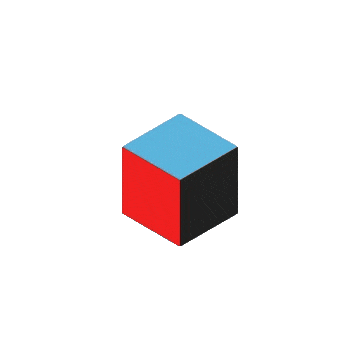
“You don’t have to be the victim of your environment. You can also be the architect of it.”
❓ What You’ll Learn
- What are charter cities?
- Who has relocation incentive programs?
- Will charter cities increase inequality, discrimination and gentrification?
- How are charter cities and remote work related?
- What would economists change if they ran the world?
- Why does governance matter?
💎 Why It Matters
What separated East and West Germany? Zhuhai, Shenzhen, Shantou and Xiamen from China? What separates North and South Korea?
Governance.
Bad laws lead to poverty.
🔍 Problem
Poor governance works. For a few.
Benefits are concentrated. Costs dispersed.
💡 Solution
Charter cities are new cities with better laws.
They go by many names: Special economic zones (Dubai Internet City), special administrative regions (Hong Kong) and countries (Singapore).
As Tyler Cowen says: “There are a lot more charter cities than we think. It’s just that the successful ones stop looking like charter cities.”
🏁 Players
Charter Cities
- Nkwashi • A university-anchored city under construction in Zambia.
- Próspera • A semi-autonomous zone on the island of Roatán. Built in partnership with Honduras.
- Talent City • Located in Nigeria. It’s meant to be “…free of complex socio-political or economically protectionist considerations.”
Special Economic Zones
- Shenzhen • Located near Hong Kong. China’s first special economic zone.
- Mariel • A port located near Havana.
- Centenary City • A planned city in Nigeria meant to rival Dubai and Singapore.
- Tanjung Lesung • Located in Indonesia. Focused on tourism.
- China–Belarus Industrial Park • Focused on high-tech manufacturing.
Special Administrative Regions
- Hong Kong • The former British Colony transferred to China in 1997.
- Macau • A former Portuguese colony with a separate governing system from mainland China.
- Sinuiju • A region of North Korea experimenting with a market economy.
- Yogyakarta • The only recognized monarchy within the government of Indonesia.
Organizations
- Charter Cities Institute • A nonprofit aimed at improving the ecosystem for charter cities.
- Creator Towns • An initiative to grow small towns by leveraging the digital economy.
- Plumia • Billed as the first country on the internet.
- Bluebook Cities • A group aimed at building cloud-first cities. Also behind Praxis.
🔮 Predictions
- Remote work will lower switching costs between cities. Where we work and live are being decoupled. We’ll optimize for lifestyle and physical networks over offices.
- Cities will compete for citizens. Miami’s Mayor makes a show of it. Governance options lead to more competition between jurisdictions.
- Relocation incentive programs will become more aggressive. See the remote work report with 25+ relocation incentive programs.
☁️ Opportunities
- Fight as few battles as possible. Consider relocating before building a new city.
- Decide what to test. How much political autonomy do you need to:
- Ban cars
- Lower taxes
- Legalize drugs
- Reform education
- Use ranked-choice voting
- Institute an open container law
- Legalize certain medical procedures
- Start with problems, not policies. Don’t fetishize charter cities or seasteading. Think from first-principles.
- Cheaply try ideas. Test governance models in cruise ships, DAOs, virtual worlds and temporary autonomous zones like Black Rock City (Burning Man).
🔑 Key Lessons
- Experiments have positive expected returns. Most fail but some have asymmetric upside. We need more than 195 experiments.
- Environment matters. We’ve seen natural experiments where culture, geography and other variables are controlled. Governance tips the scale.
- Evolution needs variation and selection to work. We need more governance options and the ability to vote with our feet.
😠 Haters
“Lots of charter cities have failed.”
“There are a lot more charter cities than we think. It’s just that the successful ones stop looking like charter cities.” The same goes for no-code tools like WordPress. We move goalposts.
“Charter cities will be unequal.”
We don’t need charter cities for that. “Economic development specializes functions, differentiates abilities, and makes men unequally valuable to their group.” —Will Durrant
“Charter cities will discriminate.”
We don’t need charter cities for that either. Teams behind relocation incentive programs run competitive screening processes to decide who receives thousands of dollars to relocate.
“This will lead to gentrification.”
Most organizations focus on greenfield cities. Those who don’t could argue that unshared upside, not gentrification, is the issue.
“East and West Germany. SEZs in China. The difference was a market economy. That’s low-hanging fruit. Now what?”
I asked lots of people: “What would you change about your city?” Everyone had answers.
“What about seasteading?”
We covered it. Costs need to drop, political issues need resolutions, there’s a quality of life question and practical things like wave breaks.
📁 Related Reports
- Paid Communities • The first stage of a cloud-first city.
- Decentralized Autonomous Organizations (DAOs) • A guide to unstoppable networks.
- Remote Work • Jobs won’t tie us to cities. We’ll be able to optimize for lifestyle design.
🔗 Links
- What would the world look like if economists were in charge? • A list of changes economists would make from legalizing drugs to removing the minimum wage.
- Building the Network State • We’ve ceded power to Gods, nation-states and now networks.
- Citizens Vote With Their Feet • On the importance of choice.
🙏 Thanks
Thanks to Katelyn Donnelly (Avalanche VC), Yolanda Stephens (WomenToDone), Anthony Castrio (Indie Worldwide), Chris, Natwar Maheshwari (Mailchimp), Michael Houck (Launch House), Yashar Nejati, Edmund Amoye (I Want This to Exist), Logan Johnson, Vic and Tom Bonin. We had a great time jamming on this report.
Get Weekly Reports
Join 54,000+ founders and investors
📈 Unlock Pro Reports, 1:1 Intros and Masterminds
Become a Trends Pro Member and join 1,200+ founders enjoying…
🧠 Founder Mastermind Groups • To share goals, progress and solve problems together, each group is made up of 6 members who meet for 1 hour each Monday.
📈 100+ Trends Pro Reports • To make sense of new markets, ideas and business models, check out our research reports.
💬 1:1 Founder Intros • Make new friends, share lessons and find ways to help each other. Keep life interesting by meeting new founders each week.
🧍 Daily Standups • Stay productive and accountable with daily, async standups. Unlock access to 1:1 chats, masterminds and more by building standup streaks.
💲 100k+ Startup Discounts • Get access to $100k+ in startup discounts on AWS, Twilio, Webflow, ClickUp and more.
Brought to you by the team behind HeadsUp
What you’ll get:
- 5 Charter cities (66% More)
- 10 Special Economic Zones (100% More)
- 7 Special Administrative Regions (75% More)
- 10 Organizations (150% More)
- 5 Predictions (66% More)
- 8 Opportunities (100% More)
- 8 Key Lessons (66% More)
- 10 Links (233% More)
With Trends Pro you’ll learn:
- (📈 Pro) How to start a charter city?
- (📈 Pro) Who’s crowdfunding an island?
- (📈 Pro) Why should you start with an existing city?
- (📈 Pro) Other than governance, what matters?
- (📈 Pro) How to cap your downside?
- (📈 Pro) Why will it become easier to build charter cities?
- (📈 Pro) How to avoid the multiple-miracle problem?
- (📈 Pro) How to align incentives with host states?
- (📈 Pro) Who tried to build a cruise ship community?
- and a lot more…








